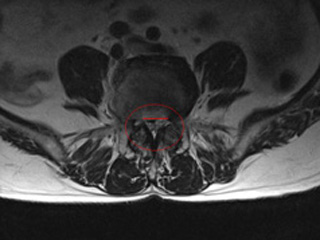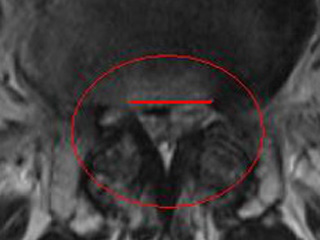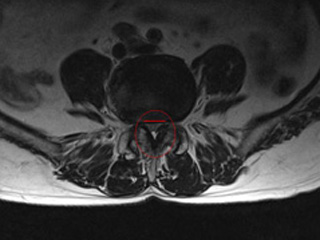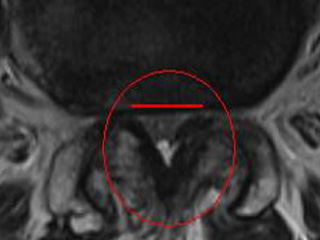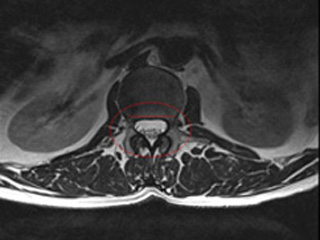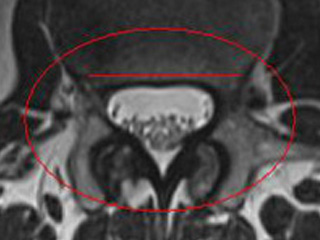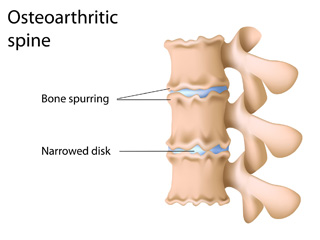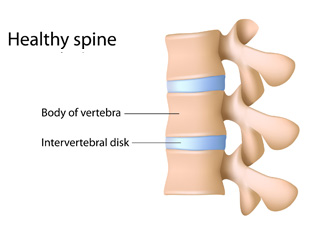Lumbar spinal stenosis is a narrowing of the spinal canal at the level of the lower back, where the nerve roots and spinal cord pass through.
The compression of these structures may cause loss of motor control and sensation, weakness or pain. When it is severe it can affect the muscles that control your bowel and bladder, and therefore their regulation causing dysfunction.
The patient feels pain that radiates from the lower back into the legs with walking or prolonged standing, what compels the patient to stop regularly to be relieved. The syndrome is knows as “neurogenic claudication”.
Once the pressure on the nerve reaches a critical level, the pain also appears when seated or lain down with efforless undertaking.
Some patients are born with back problems like narrow medullary canal (congenital spinal stenosis), but in most cases stenosis results from the normal aging process and degenerative changes of the spine as the invertebral disks degenerate and lose their ability of shock absorbers and support function, consequently, spinal stenosis most often occurs in adults over 60 years old.
According to radiological criteria, a narrow canal does not always lead to symptons of stenosis until another additional factor shortens the available space for nerve structures such as vertebral disk prolapses, tumors, inflammatory conditions and spine fractures.
Indications for stenosis surgery
- When conservative treatment is not enough (analgesics, weight loss, physical therapy)
- Unbearable pain despite taking medicines
- Loss of strength and sensitivity in legs. Acute disability
- Bowel and bladder dysfunction
Surgical treatment
This procedure involves removing everything (bone, bone spurs, flavum ligament, disks...) that are compressing the nerves, either nerve roots or spinal cord.
Depending on the location of the compression, severity and other factors, the intervention would have different names.
- SPINAL CANAL RECALIBRATION: it consists of removing the pressure on nerve roots increasing the size of holes where the spine passes through.
- LAMINECTOMY: it consists of removing a portion of the vertebral bone called lamina in order to decompress the nerves and sac nerves and make the space bigger for the spinal cord and nerve roots. It is perfomed in more severe cases than the recalibration.
Even though surgeons solve the canal stenosis, the procedure of removing the posterior arch parts of the vertebra usually causes spinal instability. If instability is not treated soon, it may lead to the reappearance of the symptons in a short period of time and result in worse consequences like malformations (scoliosis, kyphosis).
For this reason in most surgical interventions a SPINAL FUSION is needed. In a spinal fusion two or more vertebras are healed. The surgeon uses screws and sometimes an intersomatic cage to hold the spine in place while the bones fuse together. A bone graft is always taken from the backbone of the patient to do the fusion. This method eliminates motion and prevents slippage after surgery.








